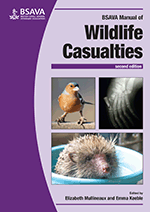
Full text loading...

Juvenile wildlife casualties are one of the most common presentations to the veterinary clinic. They may be admitted for a number of reasons, including abandonment, accidental disturbance and cat attack. They will often require care for an appreciable amount of time. There are many considerations that must be explored before attempting to rear juvenile wildlife species. These include housing, time and resources available and, in particular, the potential of malprinting and the knock-on effects this will have on release options and survival rates.
Care and hand-rearing of young wild animals, Page 1 of 1
< Previous page | Next page > /docserver/preview/fulltext/10.22233/9781910443316/9781910443316.8-1.gif

Full text loading...












